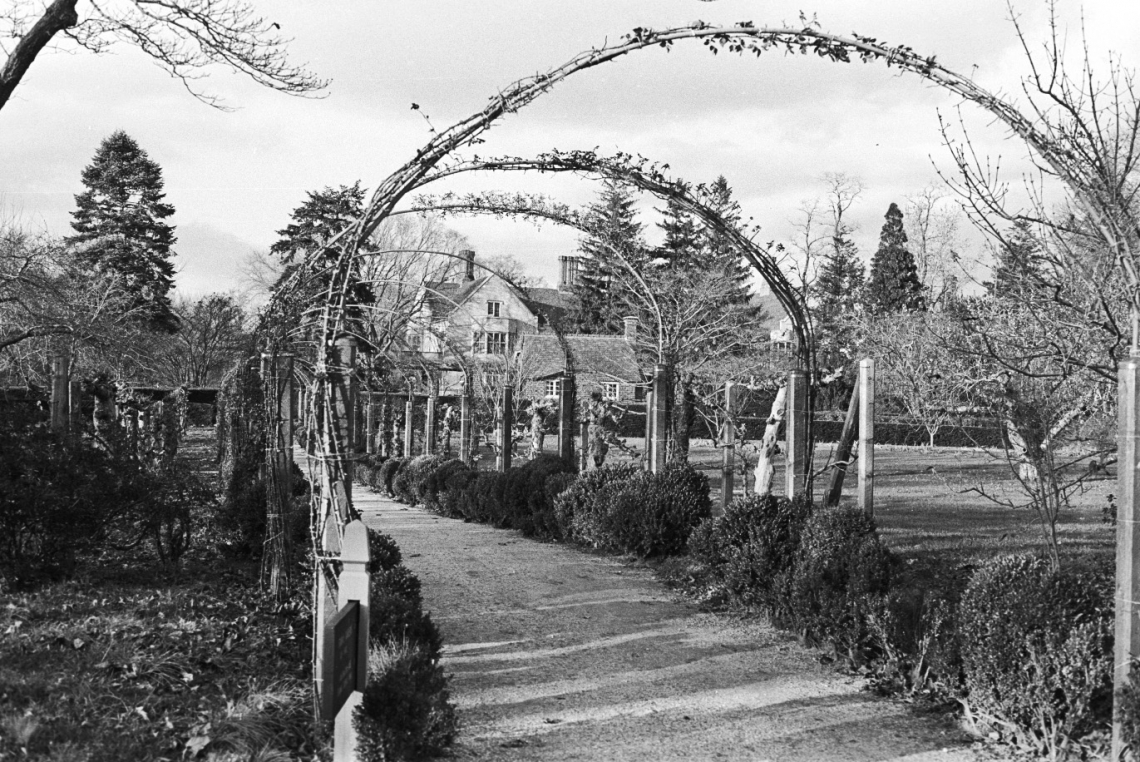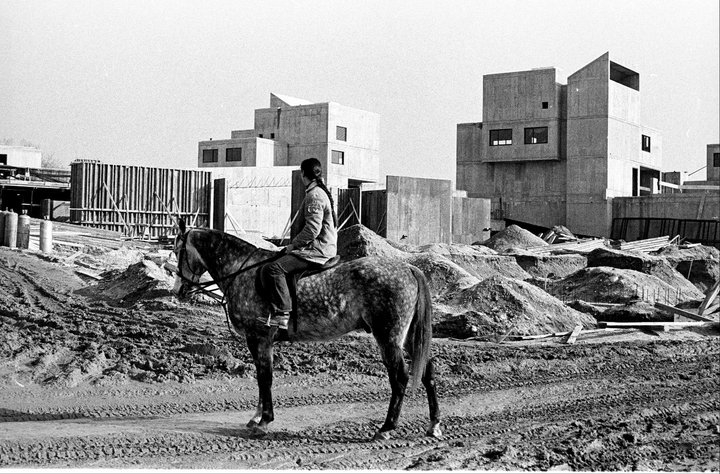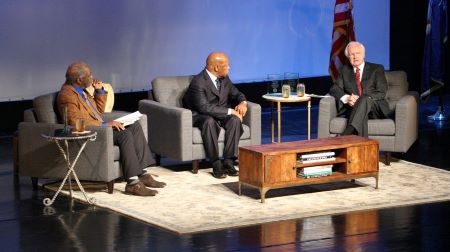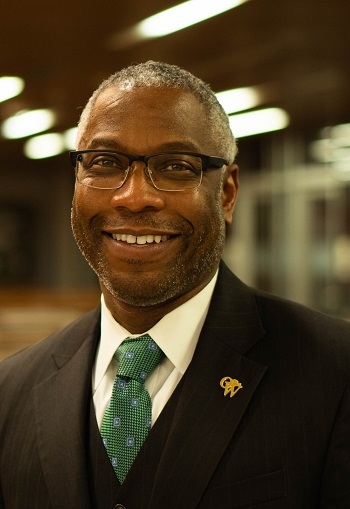One of the youngest of the sixty-four campuses of the State University of New York, SUNY Old Westbury prides itself on the diversity and accomplishments of its faculty, staff, and student body, as well as its longstanding commitment to academic innovation, access, and social justice. From its experimental beginnings in 1968, the University has matured into a regional institution of higher education that works to prepare its graduates to serve the world through their character and leadership.
1965~1969
Early Beginnings
The State University of New York at Old Westbury was chartered in 1965 by SUNY’s Chancellor, Samuel B. Gould, who sought to add to the state system, a college that was innovative in curricula and academic policy. Its first president, Harris Wofford, envisioned the creation of a small experimental institution, centered on a common core of courses and individualized student projects, that would draw a diverse but talented group of students and faculty together.
President Wofford’s background in politics and in organizing the Peace Corps were the underpinning of a pedagogical orientation that led him to believe that a participatory framework, broad exposure to world classics, common seminars, a multi-cultural focus, and dedication to community service constituted the ideal educational background for an engaged citizenry.
The campus launched its operation in 1968 at Planting Fields, the former Coe estate located in Oyster Bay, Long Island. Recruiting a group of talented students, faculty, and staff planners for the new college, President Wofford hoped to develop a program that would serve as a transformative model for higher education in the United States. That vision encountered immediate difficulties, as disagreements quickly surfaced among the planners about the constituent elements of the core program.
The first class of eighty-five students, recruited from across the nation, arrived in September 1968. In an atmosphere that encouraged nearly unrestricted opportunities for experimentation and innovation, the first students opposed all academic requirements, insisting on equal voting rights with faculty on all policy matters. By the Spring semester, political divisions led to protests that disrupted the educational program and President Wofford decided to leave at the end of 1969 to become President at Bryn Mawr College.
This earliest portion of the institution's history has been featured in "Experiments," an online, multimedia presentation prepared by members of the Old Westbury faculty.
Following President Wofford’s departure, SUNY officials appointed a special commission to examine the campus' progress. The commission’s report convinced the SUNY Board of Trustees to take several specific actions; it should cease to admit new students, reorganize, and, in tandem, continue classes at the Planting Fields site under the direction of Dr. Council Taylor, a distinguished anthropologist and member of the faculty.
1970s
"The Riddle of Human Justice"
In May 1970, John D. Maguire, an innovative administrator and civil rights activist was named president. Another planning year ended, and SUNY Old Westbury reopened in Fall 1971 with a student enrollment of 571. Its revised mandate called for Old Westbury to educate a diverse, multicultural student population. The new curriculum was organized around a critical analysis of fundamental issues of society or, as enunciated in the new mandate, an exploration of “the riddle of human justice.” This plan, like the previous one, emphasized arrangements that would facilitate the building of an integrated and egalitarian intellectual community and an interdisciplinary curriculum.
Old Westbury II, as it was sometimes called, unquestionably was in the vanguard of higher education reform. Welcoming non-traditional students of all ages, ethnic and racial groups, as well as various walks of life, the campus boasted one of the most diverse student bodies in the nation. Moreover, at that time, it was one of the few nationwide that housed married students in its dormitories and provided day-care facilities. Its departmental organization reflected its interdisciplinary educational programs. Even the two pre-professional programs -- Teacher Education and Communicative and Creative Arts -- were organized along interdisciplinary lines. Governance, equally innovative, involved mutual responsibility and action among faculty, students and staff on a broad range of decisions basic to the life of Old Westbury. Those institutional features engendered high levels of intellectual inventiveness, political engagement, and conflict.
In 1973, after extensive discussions, enrollment was capped at 3,500 and a plan was accepted for the future that expanded its obligations to upper division transfer students from the regional two-year colleges while reaffirming the commitment to students from a broad range of economic, education, social, and ethnic backgrounds. Under this plan, SUNY Old Westbury moved to expand its disciplinary and professional offerings; it reconfigured some existing programs and introduced new ones in order to create new majors in biology, chemistry, mathematics, languages, psychology, sociology, urban studies, and business.
1980s
The “Adolescent” Years
After John Maguire moved on in 1981 to become the Chancellor of the Claremont system in California, Clyde Wingfield, who had previously headed New York City University’s business-oriented Baruch College, became the next president. President Wingfield, who served for three years, unsuccessfully attempted to remold the institution along more traditional lines. During that period the campus building program was completed, the admissions policy revised, and the disciplinary and pre-professional elements of the curriculum reinforced.
When Clyde Wingfield left Old Westbury to take up the presidency at Northern Illinois, the campus reconfirmed its commitment to the construction of a multi-cultural community and his successors, Acting President Ulrich Haynes and President L. Eudora Pettigrew, embraced the distinctive aspects of the College’s curriculum. However, even as the institution’s mission was validated, its development was curtailed by declining State support for higher education.
1990s
Despite the worsening financial picture, the institution matured and, with some success, attempted to stabilize and bolster its reputation in the local community. Led by the science faculty, the College was more successful than any other four-year SUNY campus in attracting institutional grants. Developments in curriculum flourished as degree programs in literature, media and communications, science education, criminology and world cultures were introduced; a teaching resource center embarked on an ambitious program of activities; faculty governance was redesigned; and international programs were expanded. Student enrollment surpassed published targets, reaching a high 4,226 in 1994.
As was characteristic for many institutions of higher education in this period, however, every area of the College struggled to maintain facilities and programs. Faculty and staff numbers were reduced; purchasing was curtailed; and physical maintenance was deferred. Retrenchments, carried out in 1996, intensified the sense of crisis. By 1998, when President Pettigrew retired, the College had reached a low point in nearly 10 years in both enrollment and funding.
2000s
A Period of Remarkable Progress
In September 1999, the SUNY Board of Trustees appointed Calvin O. Butts, III, as the fifth president of the College. Recognized around the nation and world for his work as a community activist, educator, and minister, President Butts served at the time of his appointment and continued throughout his tenure as Pastor of the historic Abyssinian Baptist Church in New York City. His Old Westbury presidency would last for nearly 21 years.
Under President Butts’ dynamic leadership, the College made remarkable progress in rethinking, renewing, and rejuvenating itself. After introducing the highest admissions standards on record for the campus, SUNY Old Westbury achieved a sustained period of growth, increasing enrollment by more than 56 percent when the campus achieved its highest enrollment in the institution's history in Fall 2019. Academically, graduate programs were introduced in 2004 and today boast more than 300 students studying in 16 master’s degree programs. Along with graduate instruction, the period 2000-2020 saw the introduction of undergraduate degree programs in Adolescence Education: Social Studies, Biochemistry, Visual Arts (BFA), and Visual Arts: Electronic Media Design.
This era in the campus' history also saw the focus and development on an array of student support and development functions. During this time the campus added its Honors College, Office of Transfer Services Office, Office of Commuter Student Services, the Student Success Center, the Panther Pantry, and the award-winning Community Action, Learning and Leadership program.
More than $200 million in capital construction and renovation projects for the campus were completed, including The Woodlands Residence Halls, the Student Union, University Police Department Headquarters, as well as the new, $64 million Academic Building, which opened in 2012 as the first LEED Gold certified higher education facility on Long Island. Notable renovations include the Campus Center Building, the Campus Library, and more than $10 million in instructional and administrative technological enhancements across the campus.
The heights during this period were recognized throughout the region, state and nation, with SUNY Old Westbury being recognized among the nation’s “best values” by Money Magazine, among the most diverse by U.S. News and World Report and USA Today, and for nine consecutive years as a member of the U.S. President's Higher Education Community Service Honor Roll.
The longest-serving president in the history of Old Westbury, Dr. Butts retired from service to the institution in August 2020 and was named President Emeritus by the SUNY Board of Trustees in September 2020.
2020s
Moving Forward, Together
As SUNY Old Westbury moves forward, its goal will remain what it has always been: To instill in students the ability to think critically, act ethically, and succeed in what is an ever-changing, more competitive global society.
To lead the immediate future of the institution, the SUNY Board of Trustees appointed Dr. Timothy E. Sams as the sixth president of SUNY Old Westbury. Dr. Sams took his post in January 2021.
Through his leadership, SUNY Old Westbury will continue to serve as a vibrant learning community, where its students are challenged by the dynamic academic and social environment created for them. The need for a dynamic academic environment is greater than ever before. Without continued access to education that is of the highest quality, responsive to student needs and demands, and forward-thinking for the people and communities it serves, future students from across Long Island, New York State and our nation may be deprived of the very skills and knowledge required for success.
This narrative was compiled using documents prepared by Professor Emeritus Naomi Rosenthal and Distinguished Teaching Professor Rita Colon-Urban for the College's 2000 Middle States Accreditation and by the staff of the Office of Communications and University Relations.




